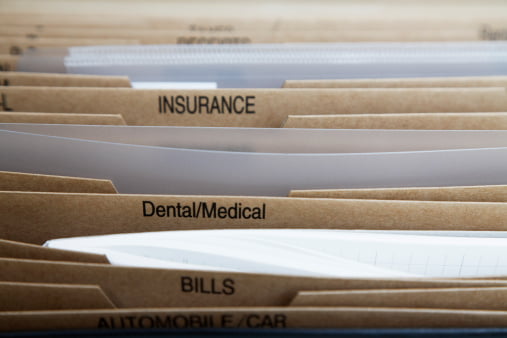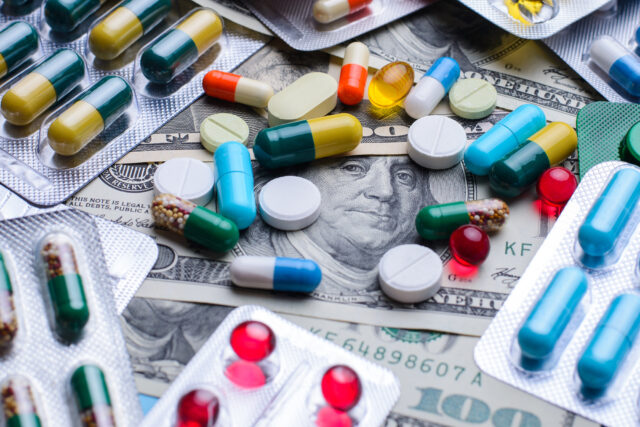
Part D: More Retirees Face High Drug Costs

Several million retirees have spent so much on their prescriptions in recent years that they crossed over into the “catastrophic” phase of their Medicare drug plans.
Once catastrophic coverage kicks in, Part D drug plans require retirees to pay only 5 percent of their medication costs out of their own pockets. But there’s a catch: there is no cap on total annual spending, which can quickly rise to thousands of dollars if they need chemotherapy or a brand-name designer drug for a rare medical condition.
Juliette Cubanski, deputy director of the Kaiser Family Foundation’s Medicare policy program, said that could change, because proposals to place a cap on total out-of-pocket spending in Part D plans have a bipartisan tailwind behind them. Democrats in the House recently reintroduced a bill that would limit spending to $2,000. Last year, the Republican-controlled Senate Finance Committee approved a $3,100 cap, which is currently part of a Republican prescription drug bill.
Now, President Biden says he wants to limit retirees’ spending in their Part D plans. However, the bills circulating on Capitol Hill could also become tangled up in a more complex debate about a related issue: the best way to control drug prices.
A flat dollar cap – if it passes – would be simpler than the current system for determining out-of-pocket drug costs, though it would mainly help people with extraordinarily high spending. Cubanski said most people on Medicare spend less than $2,000 out-of-pocket annually.
But in a given year, she said, “that could be anybody.” And as baby boomers stampede into retirement, more people will be pushed into catastrophic coverage at a time of continually rising drug prices.
Currently, Part D beneficiaries pay for 25 percent of their prescriptions until their total cash outlays – combined with the price discounts that drug manufacturers are required to give them plus any subsidy paid by the Part D plan – reach $6,550. After this threshold, retirees start paying 5 percent of their drug costs. (The dollar threshold is increased every year to reflect the growth in per capita spending by people who buy Part D plans.)
Kaiser estimates the number of Medicare beneficiaries using catastrophic coverage nearly tripled to 1.5 million annually between 2010 and 2019. During that decade, they incurred a total of $9.9 billion in out-of-pocket costs after the 5 percent copayments kicked in.
Nearly one in four older Americans say they have difficulty paying for their prescriptions, and one in five low-income retirees sometimes skips a medication due to cost.
Cubanski said a cap on out-of-pocket costs would improve access to the medications the sickest retirees need.
Squared Away writer Kim Blanton invites you to follow us on Twitter @SquaredAwayBC. To stay current on our blog, please join our free email list. You’ll receive just one email each week – with links to the two new posts for that week – when you sign up here. This blog is supported by the Center for Retirement Research at Boston College.
Comments are closed.







The comment in the article about chemotherapy costs may be misleading. Many drugs, including chemotherapy that require administration by a clinic or doctor are paid under Medicare Part B, not Part D.
If you have Medicare and a Medicare Supplement your exposure to out-of-pocket costs for Part B services is dramatically reduced. Enrollment in a Medicare Advantage plan can also limit costs you incur for similar services.
Drugs under Part D are those you obtain from a retail pharmacy, mail order service or long-term care pharmacy. Part D plans are also required to cover all cancer drugs. These would be those you manage yourself without need of direct medical supervision.
For those facing affordability issues, many drug manufacturers sponsor “Patient Assistance” programs. Eligibility for these is more lenient than Medicaid and use annual income levels to qualify, not asset amounts. Max. income levels vary by plan and drug. I’ve helped couples with incomes up to $76,000 a year qualify; other plans have lower thresholds.
Assistance is specific to each drug and not limited to just cancer drugs. Patient Assistance is NOT a drug plan nor a replacement for Part D coverage.
You may qualify for Patient Assistance even if you have a Medicare Part D drug plan. The program may still require you incur a minimum out-of-pocket drug costs, like $600 for the year, before supplying the drug at reduced or no cost.
You also have to re-qualify or recertify your eligibility each year as it is not automatic.
Many people who could benefit simply are not aware of Patience Assistance programs. A good starting point to search Patient Assistance is at http://www.rxassist.org.
I hope this is helpful to you or someone you know.
David- thank you for clarifying this information about chemotherapy medications.
This applied to me – my drugs that are administered at the hospital (at $3,000 a shot) as part of my cancer treatments are paid under Medicare Part B, not Part D.
The first and most important step Congress should – must – take is to allow Medicare to negotiate drug prices. There is clearly no “philosophic” reason to forbid this as current law does. Both the VA and the Dept. of Defense – federal agencies – are allowed to negotiate drug pricing and do so successfully. About 15-20% of Medicare beneficiaries skip needed medication because of cost, and often end up with a preventable hospitalization as a result.
Well said. The government should take a step towards it. Thank you for your view.